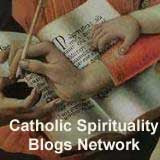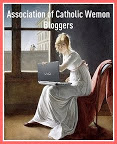 This post is part of an occasional series called Finding God in Children’s Literature, in which I look at children’s books in light of the Bible and Sacred Tradition. All correlations between these books and the Christian faith are my own insights, unless otherwise noted. You may quote me or link to these posts, but please do not re-blog them or use these ideas as though they were your own. Thank you.
This post is part of an occasional series called Finding God in Children’s Literature, in which I look at children’s books in light of the Bible and Sacred Tradition. All correlations between these books and the Christian faith are my own insights, unless otherwise noted. You may quote me or link to these posts, but please do not re-blog them or use these ideas as though they were your own. Thank you.
The great literature of western civilization, whether consciously or unconsciously, bears either the mark of the Gospel or the rejection of it. I don’t know whether Beatrix Potter was purposely teaching children about Divine Revelation in The Tale of Peter Rabbit. I do know that she was a Christian. Her most famous work of fiction suggests the Christian faith had permeated her imagination.
We read Peter Rabbit as part of our unit study on Adam and Eve. I was looking for children’s stories about gardens, and Peter Rabbit fit the bill. Now, I had read it many times before and knew the general plot. But I was astonished to find, as we read the two stories side by side, that Peter’s story is essentially Adam’s retold.
Let’s look at some of the plot points in the fall of man, and compare them to Peter Rabbit’s tale:
- God set Adam and Eve in the Garden of Eden. He warned them not to eat the fruit of the Tree of the Knowledge of Good and Evil. If they did, they would die.
Peter’s mother warned him not to sneak into Mr. McGregor’s garden to eat his vegetables. Otherwise, he might die, as his father had.
- Adam and Eve disobeyed and ate. So did Peter.
- They heard God walking in the garden. Afraid because of their nakedness, they hid.
Peter ran away as Mr. McGregor approached. He lost his coat and shoes, running away naked.
- God expelled Adam and Eve from Eden. An angel with a flaming sword kept them and their future descendants out.
Peter escaped from the garden. Mr. McGregor used Peter’s clothes to make a scarecrow to keep other creatures out.
- Adam and Eve could not eat the fruit of the Tree of Life. They would eventually die.
Peter’s overindulgence made him sick. His sisters ate blackberries (fruit!) for dinner, while he went to bed.
Now obviously, these are not all the events in either story. Peter Rabbit has no tempter. He chooses disobedience on his own. Nor does he make any type of fig-leaf clothing for himself. And an evening’s tummy ache is nothing compared to death. But the similarities are so striking, I wonder that more people haven’t seen them.
Reading literature as part of your study of the faith opens whole new vistas of meaning and understanding. It gives your children early lessons in allegory and symbolism. It’s exciting for parent and child alike. It creates opportunities for your child to write his own Bible-based fiction, and builds a bridge to Christian meditation.
Connie Rossini
Share with us: How else might you use Peter’s story in your homeschool? Did I miss any similarities? Can you think of other children’s books that mirror Bible stories?














This is wonderful. In my years of reading this book to my children and now my (homeschooled) grandchildren, I have never made nor heard this connection. It is amazing! Thank you for sharing these insights!
Thanks, Nancy. And thanks for stopping by and commenting. I hope to do more posts in this vein in the future.
Whoa! Connie, you have surpassed yourself! I love it! Hmmm… the other Beatrix Potter book frequently read in my childhood was “The Roly-Poly Pudding” (a.k.a. “The Tale of Samuel Whiskers”). In that story, young Tom Kitten is captured and is unable to self-rescue.
Gina, your comment made my day! But really, I don’t think it’s too amazing that I noticed this, given the context in which I read it. I’ll have to take a look at The Roly-Poly Whiskers. I don’t think I’ve read that one.
Hi, Connie, I’m sure you are right that Potter was influenced by the Genesis account when she wrote Peter Rabbit — although it the influence may not have been anything she was consciously aware of. The patterns of stories embed themselves deeply in our minds and imaginations, which is just one reason Biblical literacy is so important.
By the way, when you visited my blog, I hope you had time to read my recent post on Epic poetry and the Moral Imagination (http://acatholicreader.blogspot.com/2012/11/epic-poetry-and-moral-imagination.html). I talk quite a bit about the value of poetry/fiction and the value it can have in forming our understanding of the human condition.
Good to hear your opinion, Lisa. I am eager to read the post you mention–it sounds right up my alley.
Fantastic, Connie! Sharing this on my blog’s facebook page and pinning it to my Pinterest homeschool page. Thanks.
Thanks, Allison! I’m glad you liked it.
Pingback: Teaching typology with Joseph and his brothers | Contemplative Homeschool
Pingback: Benjamin Bunny and the narrow gate | Contemplative Homeschool
Pingback: Why use a homily–not a sermon–format for homeschooling? | Contemplative Homeschool